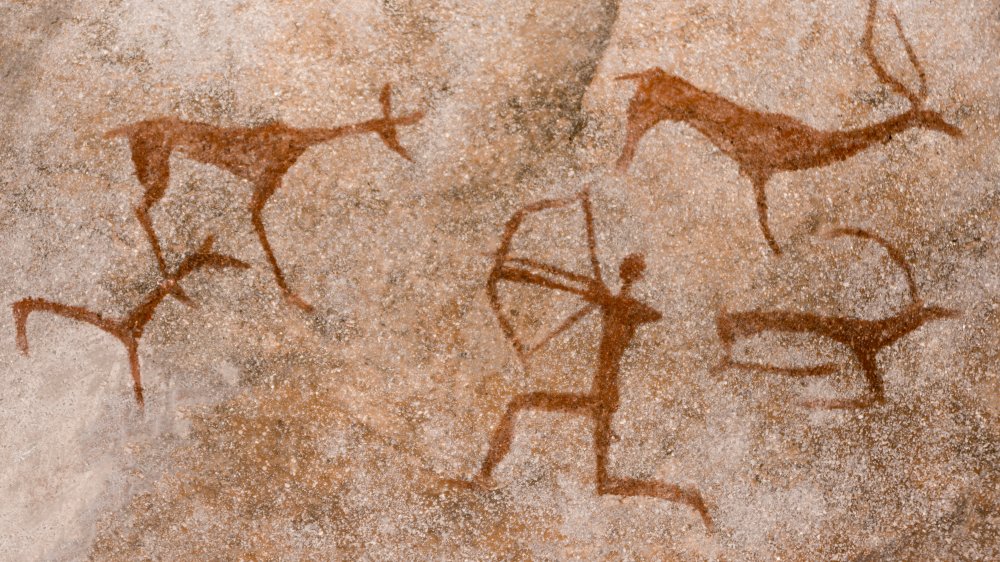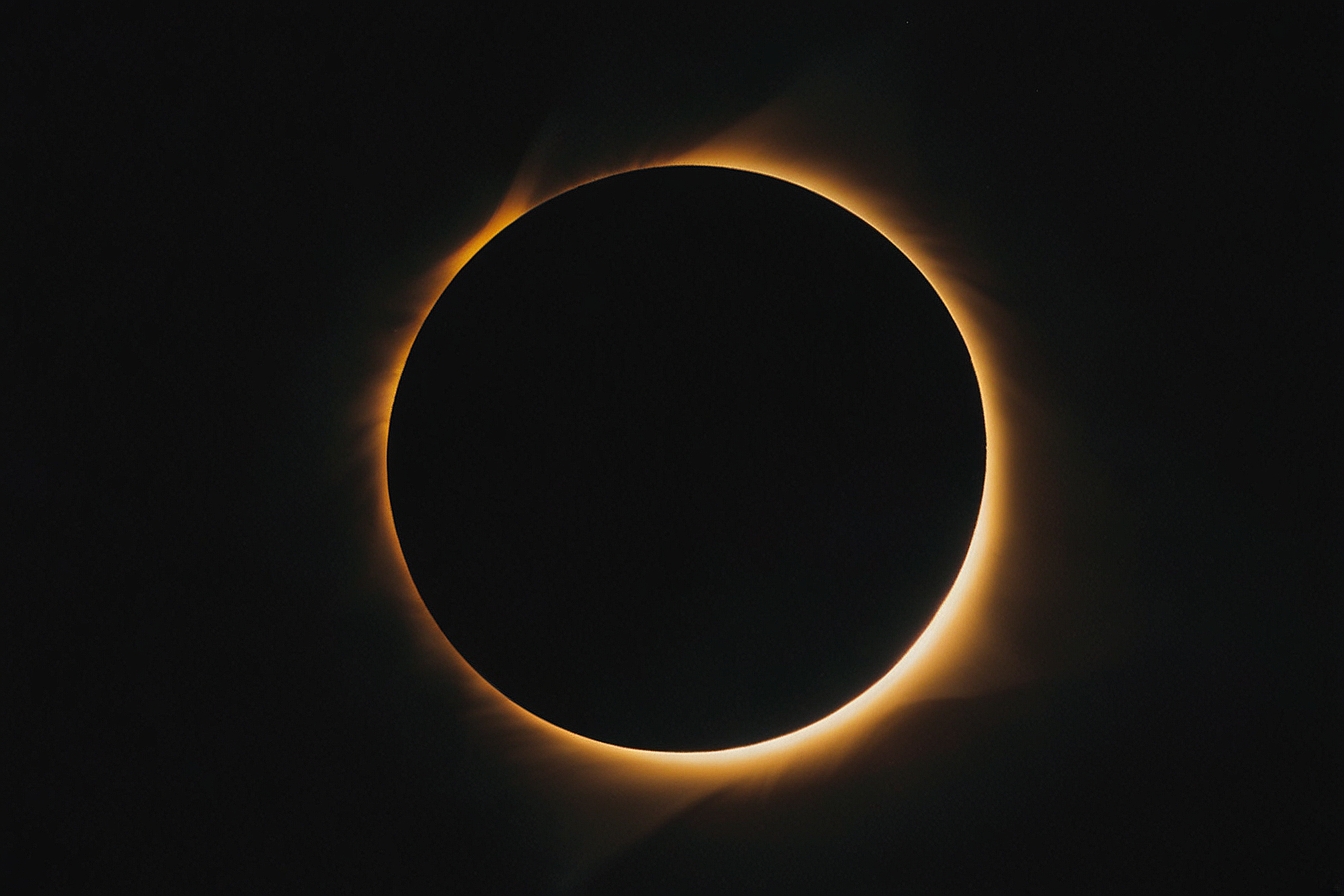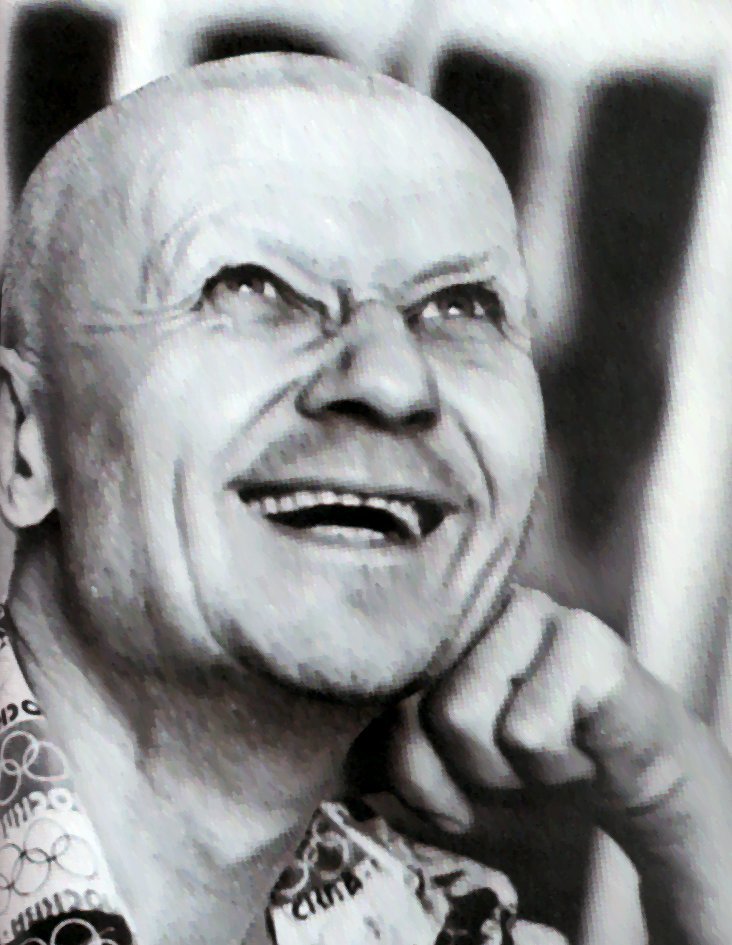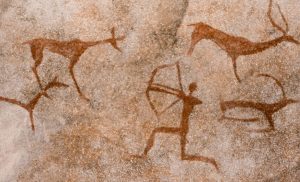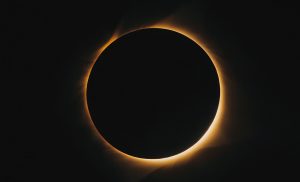Fascinating First Photos In History Most people haven’t seen.

Not many people get to say they were the first to do something important in history. Think about the first person to fly a powered airplane or organize a charity walk – only one for each. These big moments happened throughout history, but it was in the 1800s, with the invention of photography, that most people could actually see these firsts as they happened. Instead of just reading about them or looking at drawings, people could see real photos, making them feel like they were part of those moments.
Looking at photos of historical firsts isn’t just about reliving the past. It also lets us see how technology and ideas have advanced, showing the clever and curious side of humanity.
The First Image Of Earth; 1946
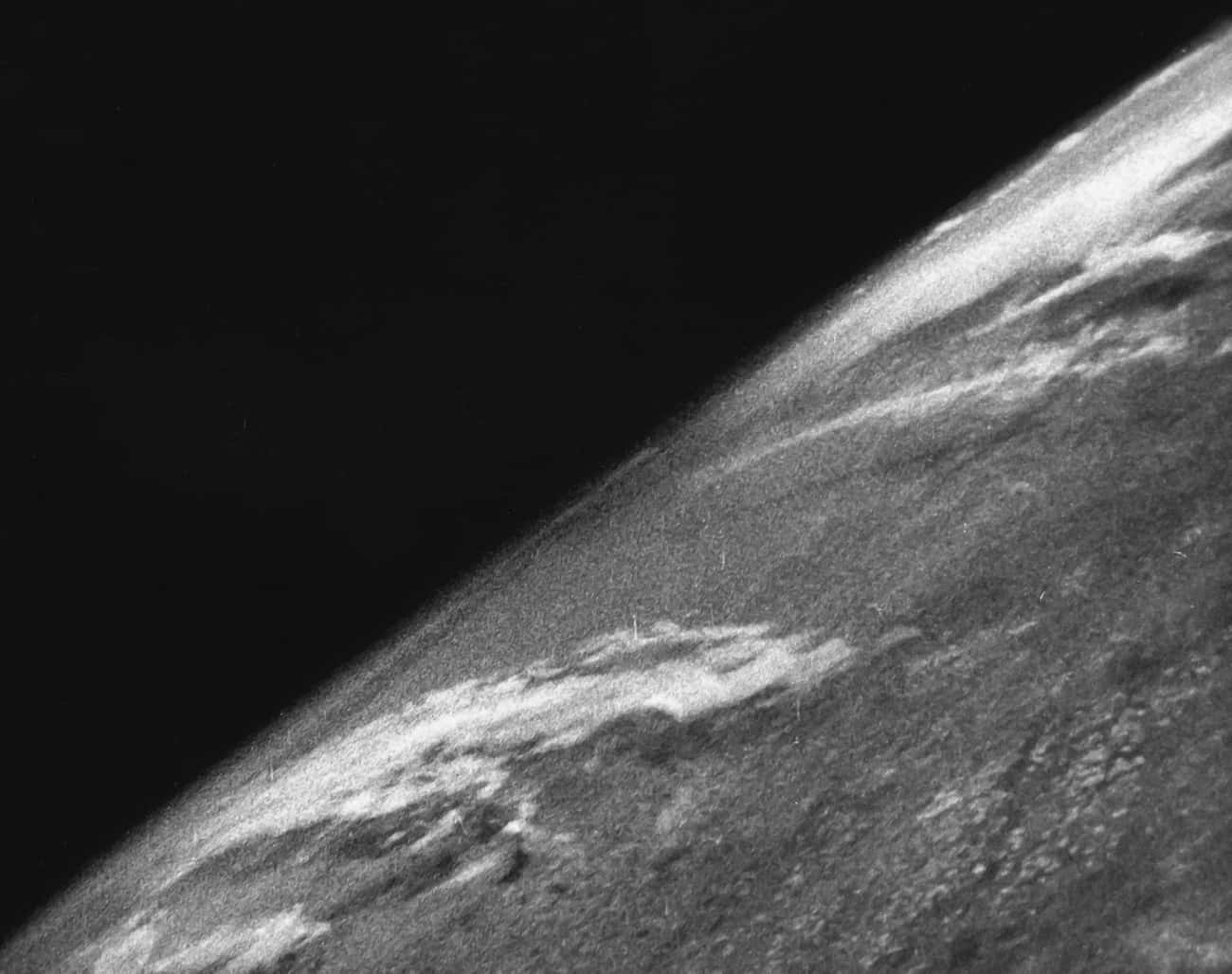
In the annals of human achievement, the year 1946 stands as a pivotal moment marked by the groundbreaking capture of the first image of Earth from space. This historic milestone, achieved through the collaborative efforts of scientists and engineers, heralded a new era in our exploration of the cosmos. At the heart of this achievement lay the V-2 rocket, originally crafted by Germany during World War II and repurposed for peaceful scientific endeavors in the post-war era.
On October 24th, 1946, amidst the vast expanse of the White Sands Missile Range in New Mexico, a V-2 rocket soared skyward, equipped with a 35-millimeter motion picture camera poised to capture a glimpse of our planet from the heavens above. Ascending to a staggering altitude of 65 miles, the rocket provided humanity with its inaugural view of Earth’s curvature against the backdrop of the cosmos. Despite the rudimentary nature of the image captured, its significance transcended technological limitations, offering a profound shift in perspective that forever altered our perception of the world we inhabit.
The awe-inspiring image of Earth suspended in the vastness of space ignited the imaginations of people around the globe, evoking a sense of wonder and curiosity about the mysteries of the universe. It served as a poignant reminder of the interconnectedness of all life on our planet and the fragility of our existence amidst the infinite expanse of the cosmos. As we continue to journey into the depths of space, the legacy of this historic moment endures as a testament to humanity’s boundless spirit of exploration and discovery.
The First Underwater Photograph; Circa 1899
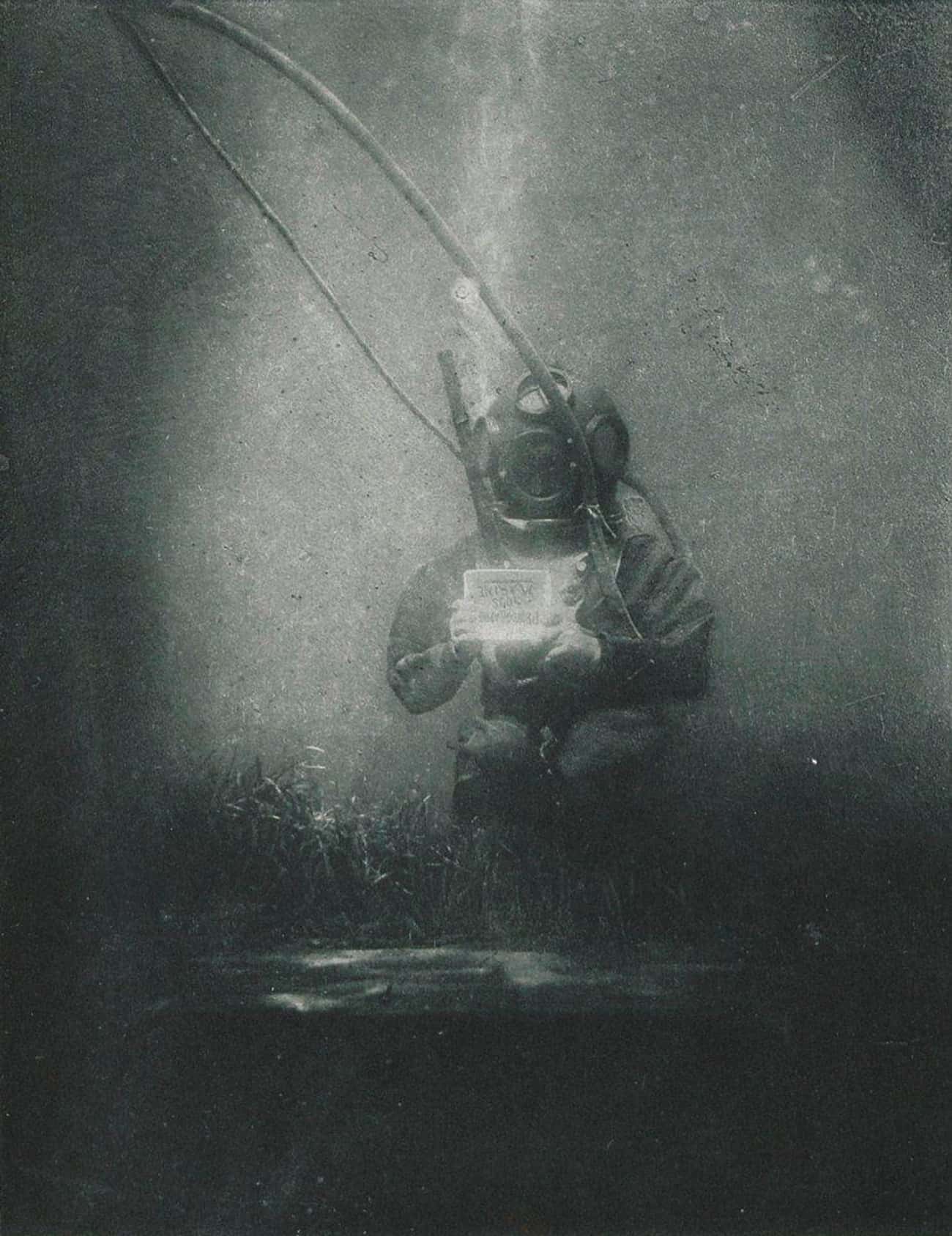
Around the year 1899, photography witnessed a momentous leap forward with the capture of the first underwater photograph. This remarkable achievement was the culmination of pioneering efforts by early photographers and inventors who dared to venture beneath the waves in pursuit of capturing the mysterious world beneath the ocean’s surface. Armed with specialized equipment and innovative techniques, these intrepid individuals embarked on a quest to unveil the hidden wonders of the underwater realm.
In an era when underwater exploration was still in its nascent stages, the advent of the first underwater photograph represented a groundbreaking milestone in human understanding of the aquatic environment. Despite the primitive nature of the equipment and techniques employed, this historic image offered a tantalizing glimpse into the mesmerizing beauty and complexity of life beneath the waves. It served as a catalyst for further exploration and discovery, inspiring subsequent generations of photographers and explorers to delve deeper into the mysteries of the ocean.
Though rudimentary by today’s standards, the significance of this pioneering photograph cannot be overstated. It not only expanded our visual horizons but also ignited a sense of wonder and curiosity about the underwater world. As technology continues to advance, the legacy of this historic moment endures as a testament to the indomitable human spirit of exploration and discovery, urging us to continue unraveling the mysteries of our planet’s oceans for generations to come.
One Of The First X-Rays; December 22, 1895
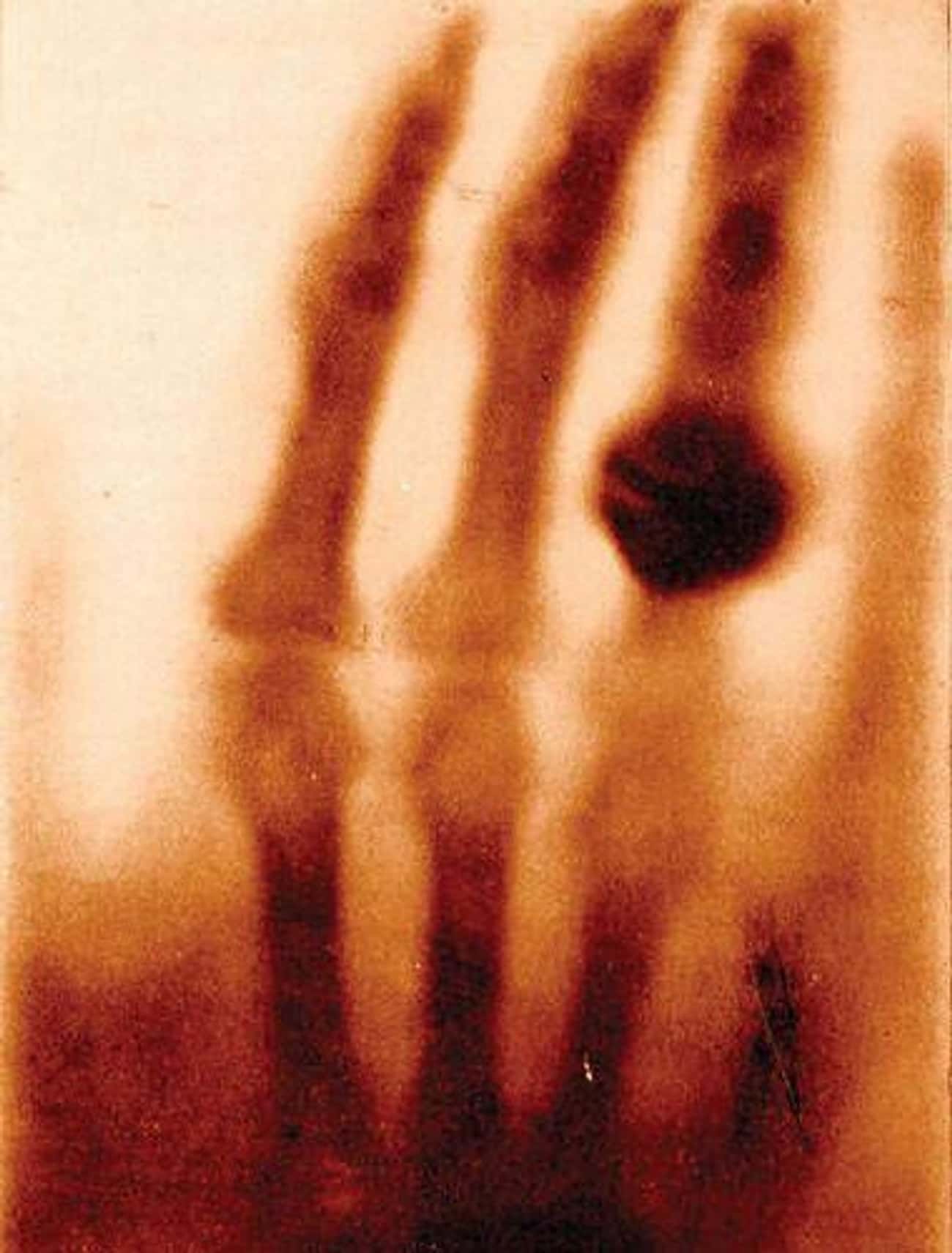
On December 22, 1895, a pivotal moment unfolded in the field of medicine with the creation of one of the first X-ray images. This groundbreaking achievement was spearheaded by the ingenious German scientist Wilhelm Conrad Röntgen, whose revolutionary discoveries would forever alter the landscape of medical diagnosis and treatment.
Röntgen’s breakthrough stemmed from his exploration of a unique form of light capable of penetrating solid objects and producing images on specialized photographic plates. In a moment of scientific serendipity, he captured one of his earliest X-ray images by focusing the mysterious rays on his wife’s hand, revealing the intricate structure of the bones within. This revelation heralded a paradigm shift in medicine, providing doctors with an unprecedented ability to peer inside the human body without resorting to invasive procedures.
The implications of Röntgen’s discovery were profound, ushering in a new era of medical imaging that revolutionized diagnostic practices and patient care. By enabling physicians to visualize internal structures with unprecedented clarity, X-rays empowered them to identify and address medical issues at their earliest stages, facilitating timely intervention and ultimately saving countless lives. Röntgen’s pioneering work stands as a testament to the transformative power of scientific inquiry, forever changing the course of medical history and leaving an indelible mark on the practice of modern medicine.
The First Powered Flight; December 17, 1903
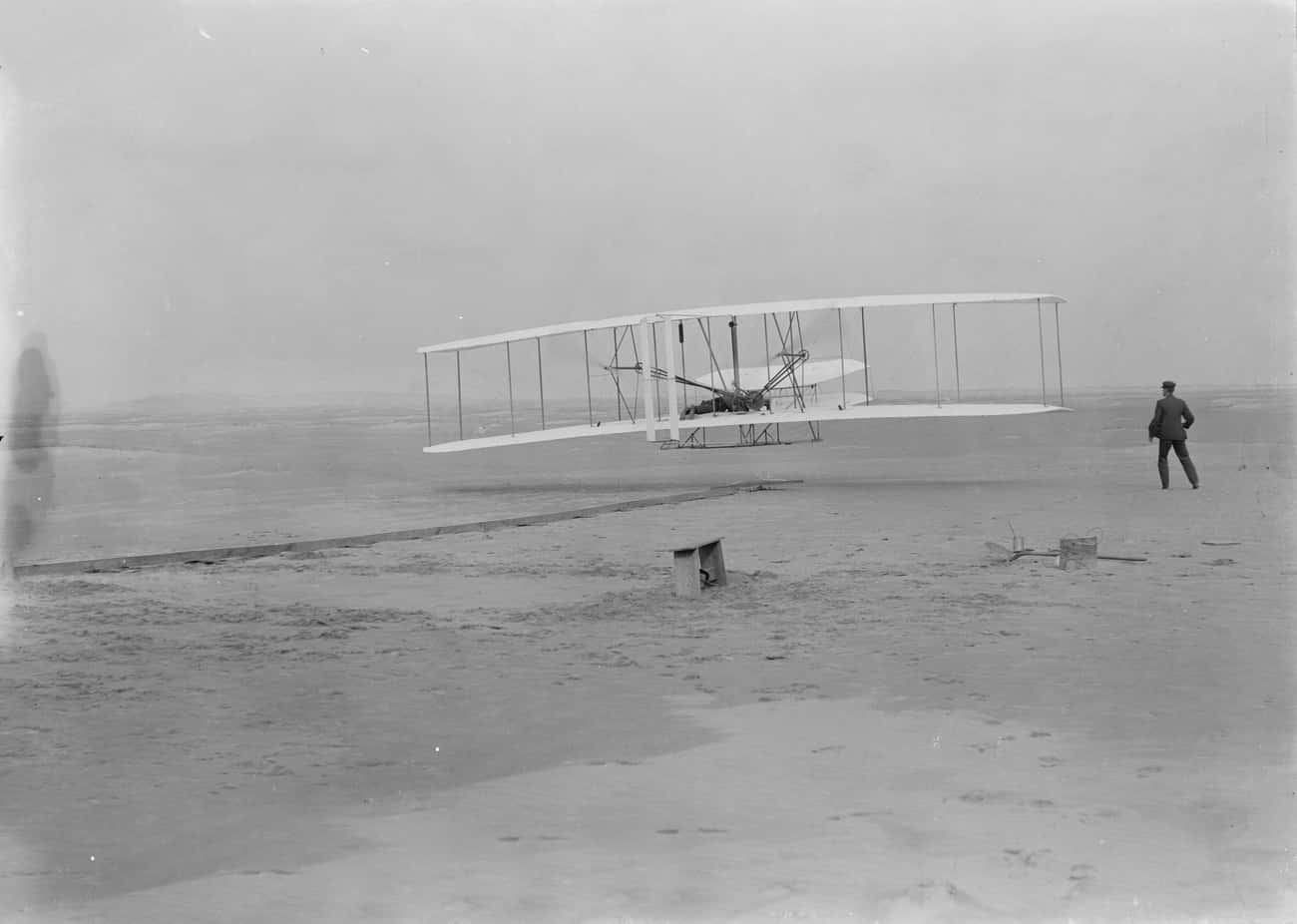
On December 17, 1903, history was made with the first powered flight. This remarkable achievement was accomplished by Orville and Wilbur Wright, two brothers from Ohio who had been working tirelessly to build and test their flying machine.
In the sandy dunes of Kitty Hawk, North Carolina, the Wright brothers successfully flew their aircraft, the Wright Flyer, for 12 seconds, covering a distance of 120 feet. This momentous event marked the dawn of aviation, as it was the first time in human history that a powered, heavier-than-air machine carried a pilot into the air and sustained controlled flight.
The Wright brothers’ pioneering flight paved the way for the development of modern aviation, revolutionizing transportation, communication, and commerce on a global scale. Their courage, ingenuity, and perseverance forever changed the course of human history, inspiring generations of aviators and engineers to reach for the skies.
The First American Spacewalk; 1965
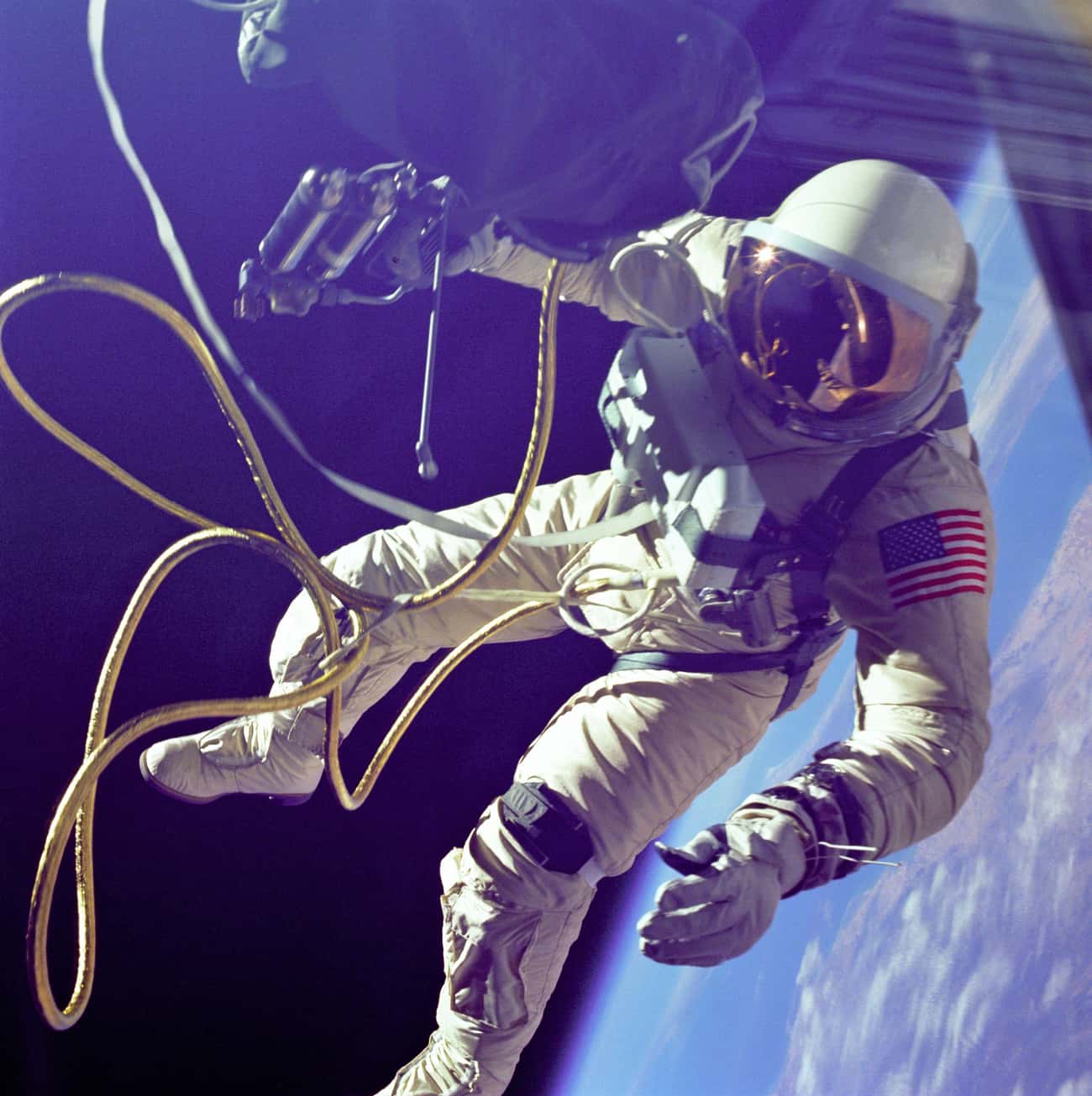
In 1965, a defining moment in space exploration unfolded with the historic milestone of the first American spacewalk during the Gemini IV mission. Astronaut Edward H. White II etched his name in history on June 3rd as he emerged from the spacecraft, tethered by a 25-foot umbilical line, and embarked on a daring adventure into the weightlessness of space. With his pioneering steps, White became the first American to experience the freedom of floating freely beyond the confines of Earth’s atmosphere.
During his mesmerizing 23-minute spacewalk, White navigated gracefully around the Gemini capsule, executing a series of crucial tasks while capturing breathtaking photographs of our planet from the vantage point of space. His historic excursion not only showcased the remarkable capabilities of human spaceflight but also demonstrated the essential role of extravehicular activity in future missions. White’s courage and determination in the face of the unknown paved the way for future generations of astronauts to explore the mysteries of space.
White’s groundbreaking spacewalk left an indelible mark on the annals of space exploration, inspiring a new era of discovery and innovation. His daring venture into the void of space symbolized humanity’s relentless quest for knowledge and exploration, pushing the boundaries of what was once thought possible. As we reflect on this historic achievement, we are reminded of the enduring spirit of exploration that continues to drive humanity’s journey into the cosmos, fueled by the courage and determination of trailblazers like Edward H. White II.
The World’s First Powered Submarine; 1879
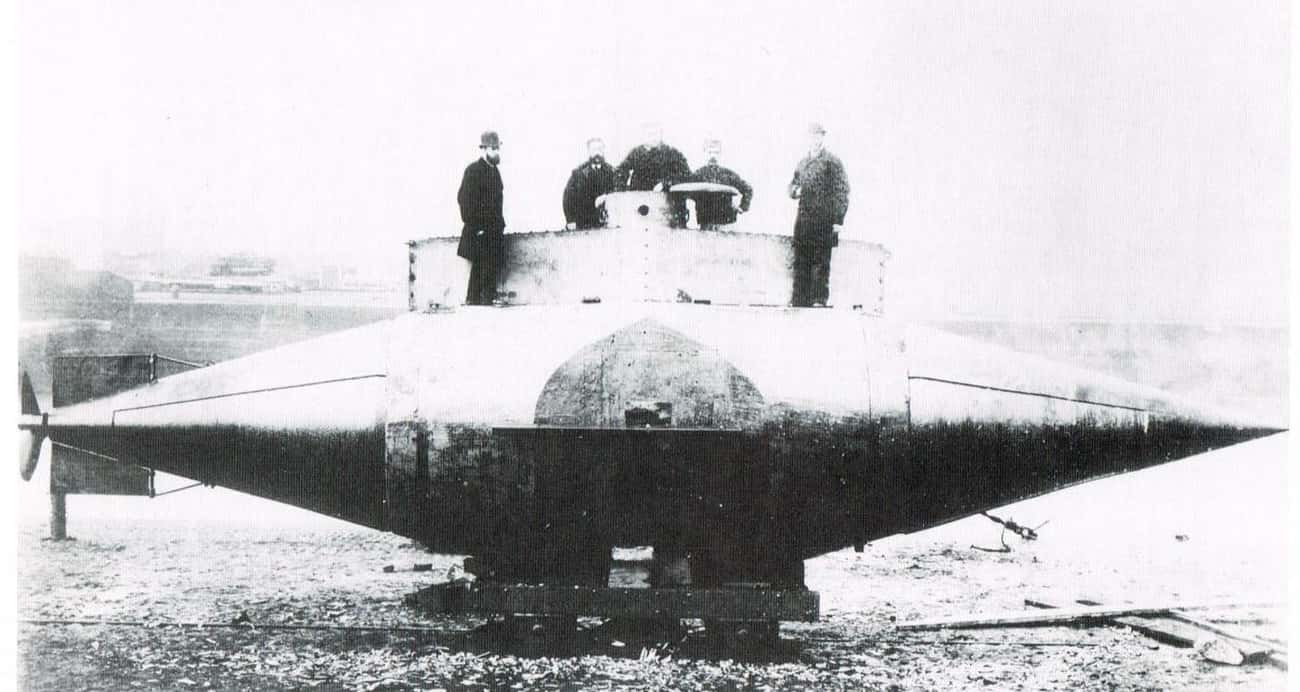
In 1879, a momentous event unfolded with the invention of the world’s first powered submarine by engineer John Philip Holland. Known as the Holland I, this revolutionary vessel marked a significant leap forward in maritime technology, propelled by a combination of steam and electric power. Holland’s ingenuity transformed the concept of underwater navigation, setting the stage for a new era of exploration and warfare beneath the waves.
The advent of the Holland I heralded a paradigm shift in naval strategy, as submarines gained the ability to maneuver stealthily underwater, reshaping the dynamics of sea-based conflicts. With its groundbreaking capabilities, this pioneering vessel altered the course of maritime history, offering a newfound advantage to naval forces seeking to operate beneath the surface. The Holland I’s success laid the foundation for the development of modern submarines, which have since become indispensable assets in both peacetime exploration and military operations.
Beyond its immediate impact on maritime technology, Holland’s invention served as a beacon of inspiration for generations of innovators and dreamers. The Holland I not only demonstrated the power of human ingenuity but also encouraged others to push the boundaries of what was thought possible. As a testament to the transformative potential of invention and exploration, Holland’s pioneering submarine continues to inspire individuals worldwide to pursue their dreams and strive for greatness in their own endeavors.
The First Photo Of Abraham Lincoln; 1846
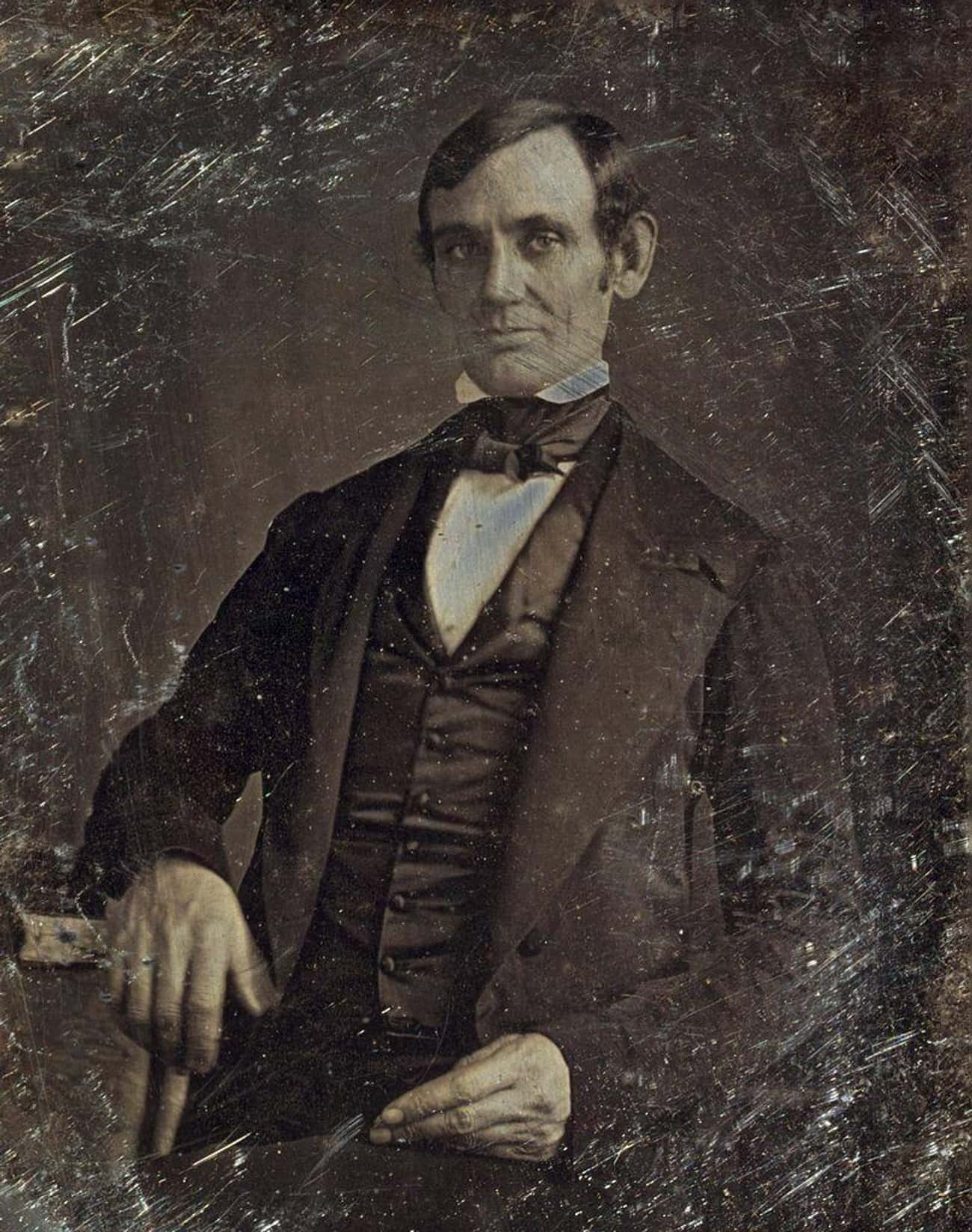
In 1846, a significant moment in history occurred with the capture of the first-ever photograph of Abraham Lincoln. At the time, Lincoln was serving as a congressman from Illinois, long before his ascension to the presidency. This historic photograph, taken in the early days of his political career, provides a rare glimpse into the life of a man who would later become one of America’s most iconic leaders.
The photograph, known as a daguerreotype, immortalized Lincoln’s image during a pivotal period in his life, offering a tangible connection to the past. Through the lens of this early photographic technology, we are afforded a unique opportunity to observe Lincoln’s appearance and demeanor as he navigated the realm of politics before assuming the highest office in the land.
Beyond its historical significance, the first photo of Abraham Lincoln serves as a poignant reminder of the power of photography to preserve moments in time and capture the essence of individuals who shape the course of history. As we reflect on this iconic image, we are reminded of Lincoln’s enduring legacy and the indelible mark he left on the fabric of American society.
Steam Man, The First American Robot; March 24, 1868
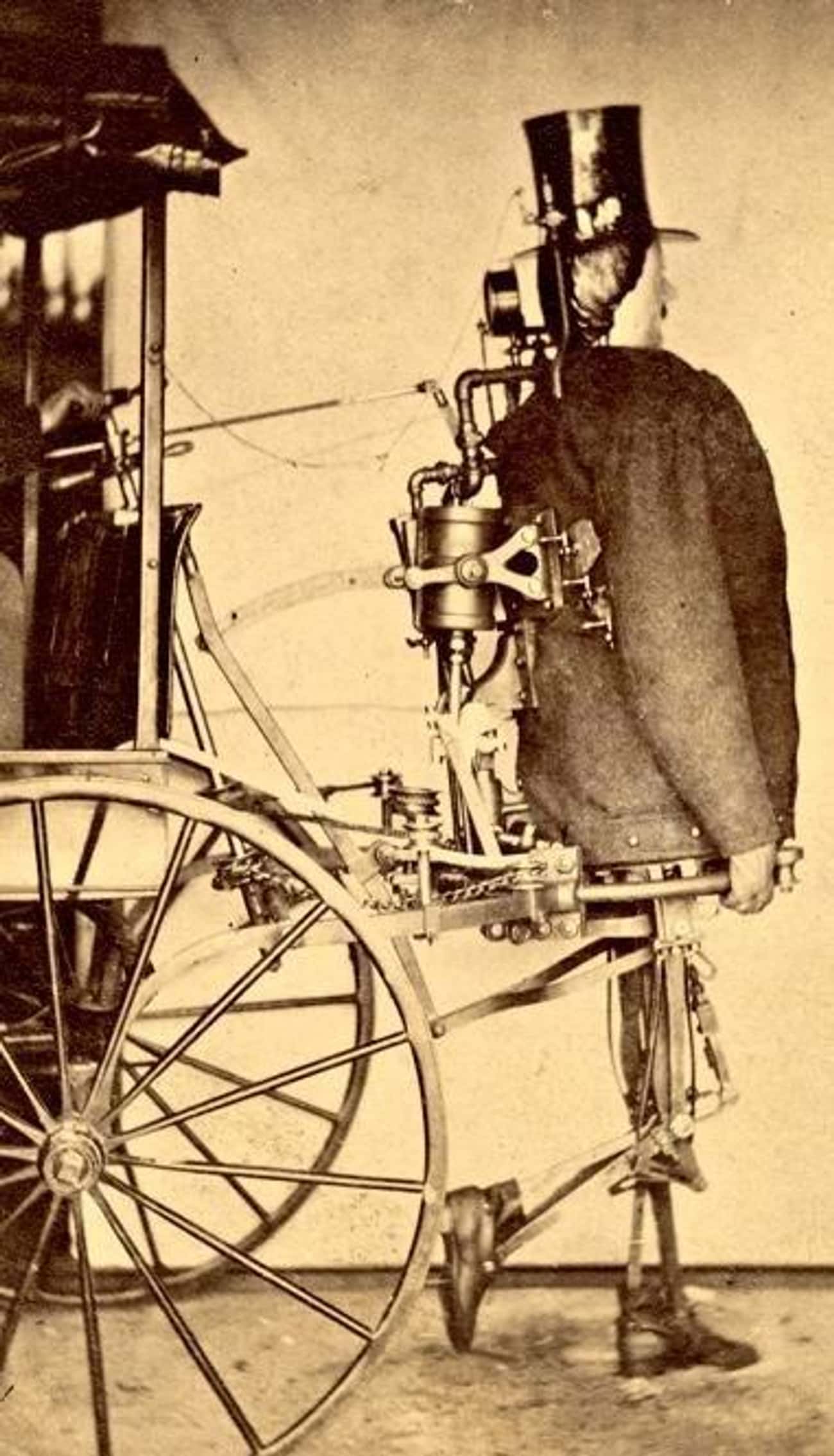
On March 24, 1868, an extraordinary invention emerged: the Steam Man, considered the first American robot. This remarkable creation was the brainchild of Zadoc P. Dederick, a talented inventor from New York. The Steam Man was a mechanical marvel, powered by steam and equipped with intricate gears and levers, capable of walking and performing simple tasks.
It captured the imagination of people across the nation, embodying the spirit of innovation and progress during the Industrial Revolution. Although primitive by today’s standards, the Steam Man represented a significant leap forward in the development of robotics, laying the groundwork for future advancements in automation and artificial intelligence. Dederick’s invention symbolized the ingenuity and creativity of American inventors, inspiring generations to push the boundaries of technology and shape the future.
The First Zinnia Bloomed In Space, Thanks To Astronaut Scott Kelly

Thanks to astronaut Scott Kelly, a historic moment occurred when the first zinnia bloomed in space. This milestone took place during Kelly’s year-long mission aboard the International Space Station (ISS). The zinnia, a colorful flowering plant, was part of NASA’s Veggie experiment, aimed at studying plant growth in microgravity to support future long-duration space missions.
Despite initial challenges, including mold growth, Kelly diligently cared for the zinnia, adjusting watering and lighting conditions. Eventually, his efforts paid off, and the zinnia blossomed, marking a significant achievement in space gardening. Kelly’s dedication and perseverance demonstrated the possibility of growing plants in space, paving the way for future astronauts to cultivate fresh food and improve life support systems during extended missions beyond Earth.
The First Photo Of A United States President, John Quincy Adams; 1843
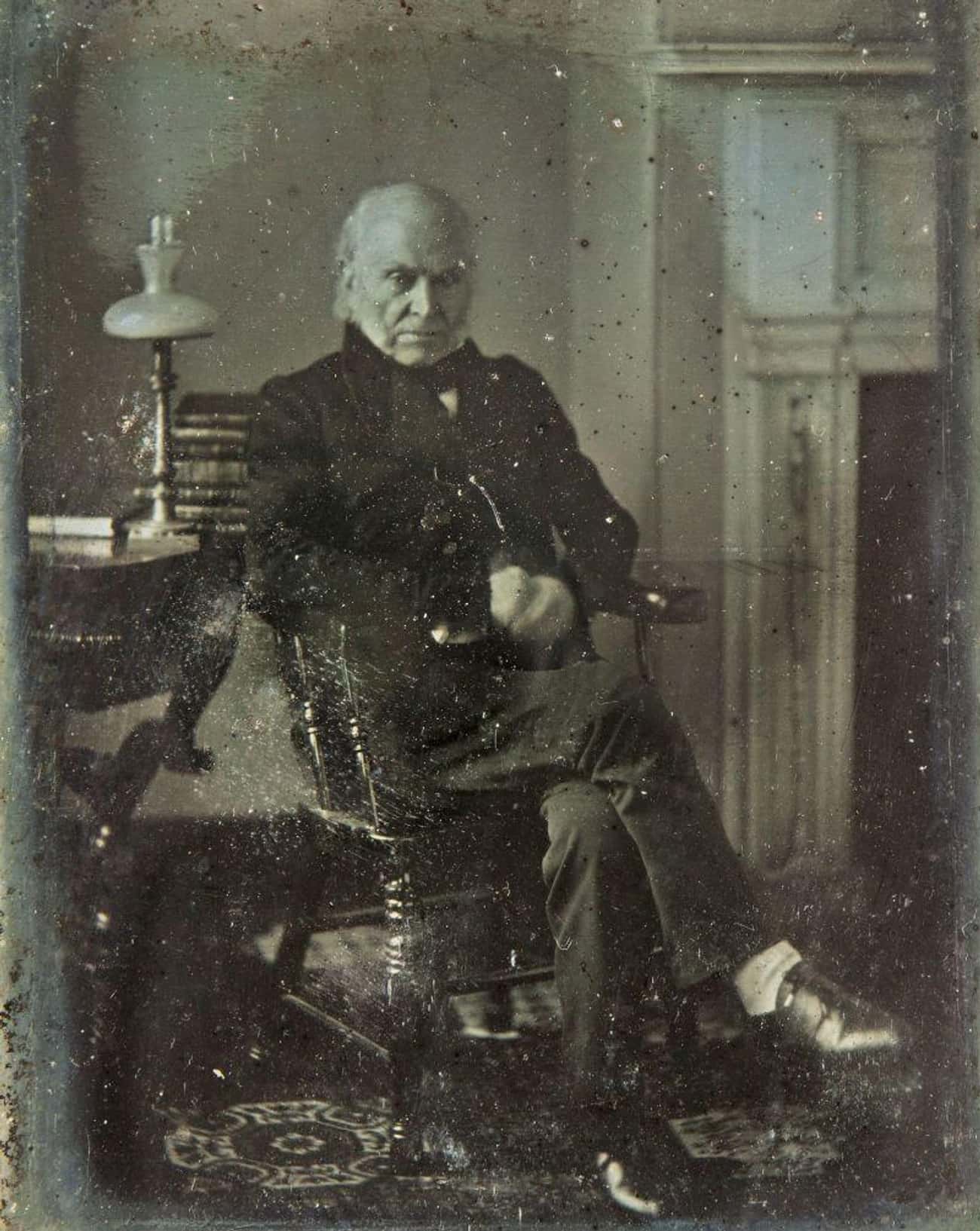
In 1843, a pivotal moment in both photographic and presidential history occurred with the creation of the first-ever photograph of a United States President, John Quincy Adams. Serving as the nation’s sixth president, Adams posed for this historic portrait during his later years following his presidency.
Captured using the daguerreotype method, an early form of photography, this image immortalized Adams’ visage, providing a rare glimpse into the appearance of a prominent figure from America’s past. As one of the earliest examples of presidential photography, this portrait holds immense significance, symbolizing the intersection of technology and history in preserving the legacy of a former leader.
Beyond its technical achievement, the first photograph of John Quincy Adams serves as a tangible link to the nation’s foundational era, offering modern viewers a direct connection to the individuals who shaped the course of American history. This iconic image underscores the profound impact of photography in documenting and commemorating moments of historical import, ensuring that the legacy of figures like John Quincy Adams endures for generations to come.
Blind Veterans In The First Ever Walking Event; 1922
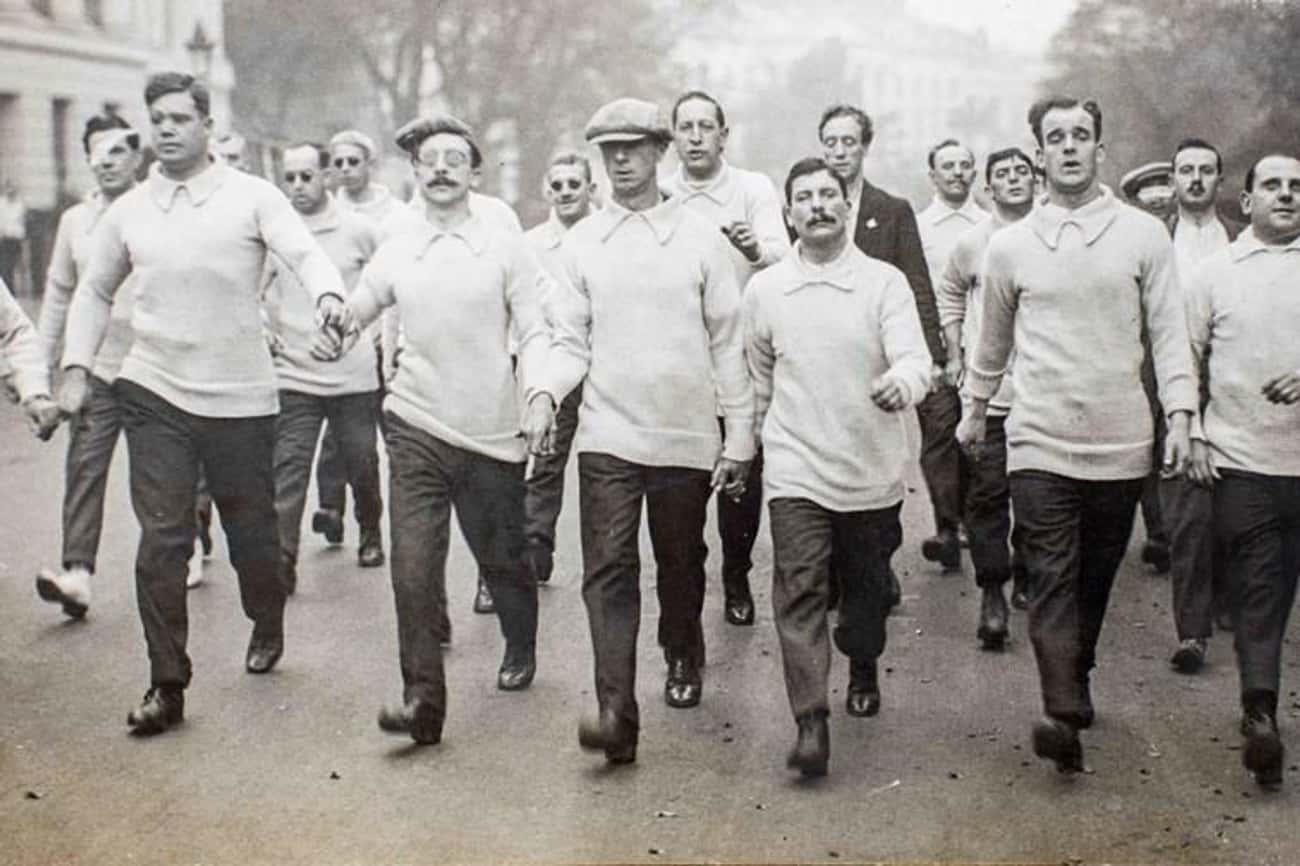
In 1922, a groundbreaking event unfolded with the inception of the first-ever walking event tailored specifically for blind veterans. This landmark initiative emerged as a testament to the unwavering commitment to support and uplift veterans who had sacrificed their sight in service to their country.
Driven by the dedication of compassionate individuals and organizations, the event provided a platform for blind veterans to showcase their resilience and indomitable spirit. Despite the formidable obstacles they faced, these courageous individuals seized the opportunity to participate in a walking competition, embodying the ethos of determination and perseverance that defined their character.
Guided by supportive companions and armed with sheer determination, the blind veterans navigated the course with remarkable poise and determination. Their participation not only underscored their capabilities but also served as a powerful statement of inclusivity and equality, challenging societal perceptions and fostering greater recognition and support for disabled veterans within the community.
Thought To Be The First-Ever Photo Taken Of A Surfer, Hawaii, 1890
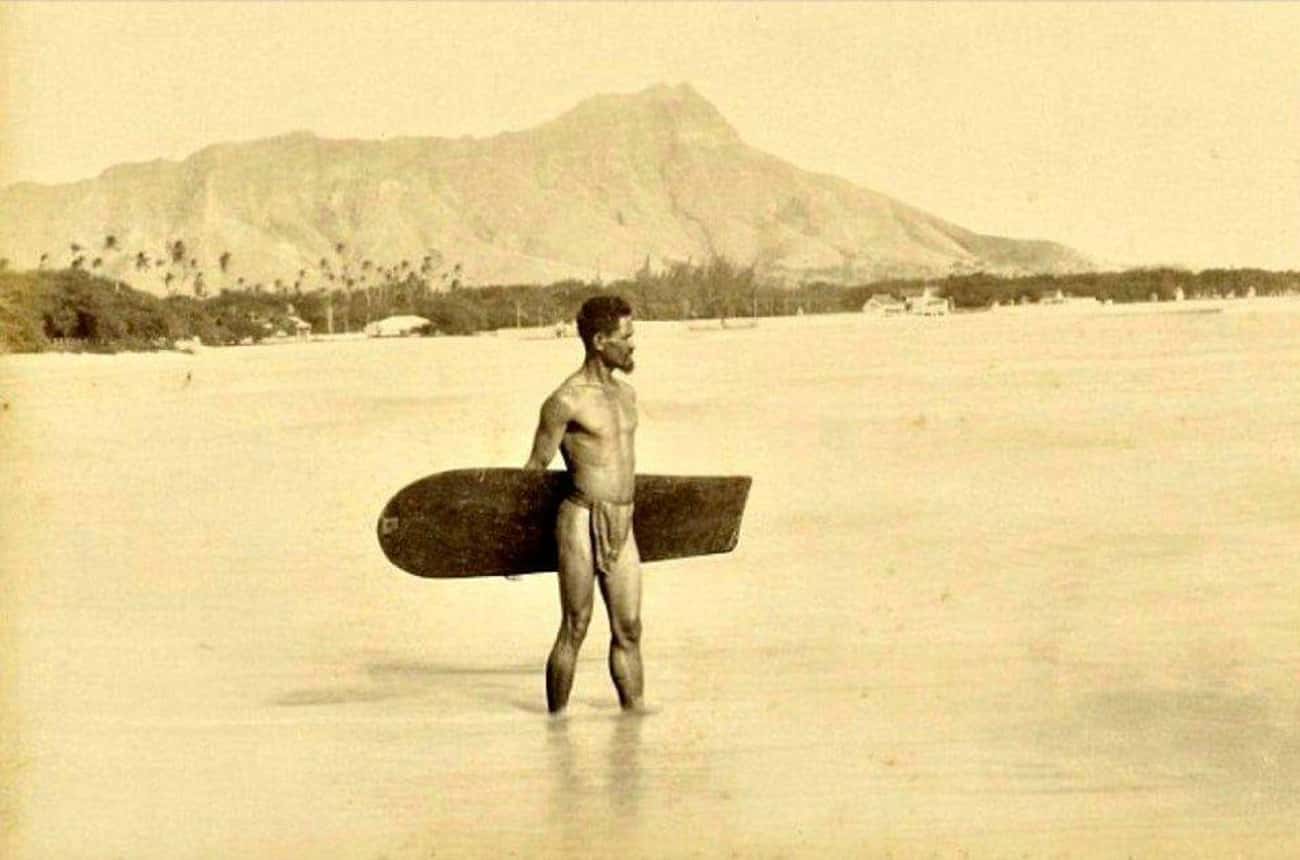
Dating back to 1890 in Hawaii, a momentous occasion in photographic history unfolded with what is widely regarded as the first-ever photograph taken of a surfer. This captivating image provides a fascinating glimpse into Hawaiian culture and the ancient art of surfing, depicting a lone surfer gracefully navigating the ocean waves against the backdrop of the majestic Pacific Ocean.
Though the identity of the surfer captured in the photograph remains shrouded in mystery, the image itself serves as a poignant reminder of the enduring legacy and rich tradition of surfing in Hawaii. In capturing this historic moment, the photographer immortalized the essence of surfing, encapsulating the exhilarating thrill of riding the waves and the profound connection between man and nature.
As a cherished artifact of bygone times, this photograph transports viewers back to an era when the sport of surfing was still in its infancy, offering a window into the past and celebrating the adventurous spirit of exploration that has long been synonymous with Hawaiian culture. In its simplicity and timelessness, this iconic image continues to inspire awe and appreciation for the artistry and athleticism of surfing, leaving an indelible mark on the annals of photographic history.
The First Photograph Taken Of A Giant Squid; 1873
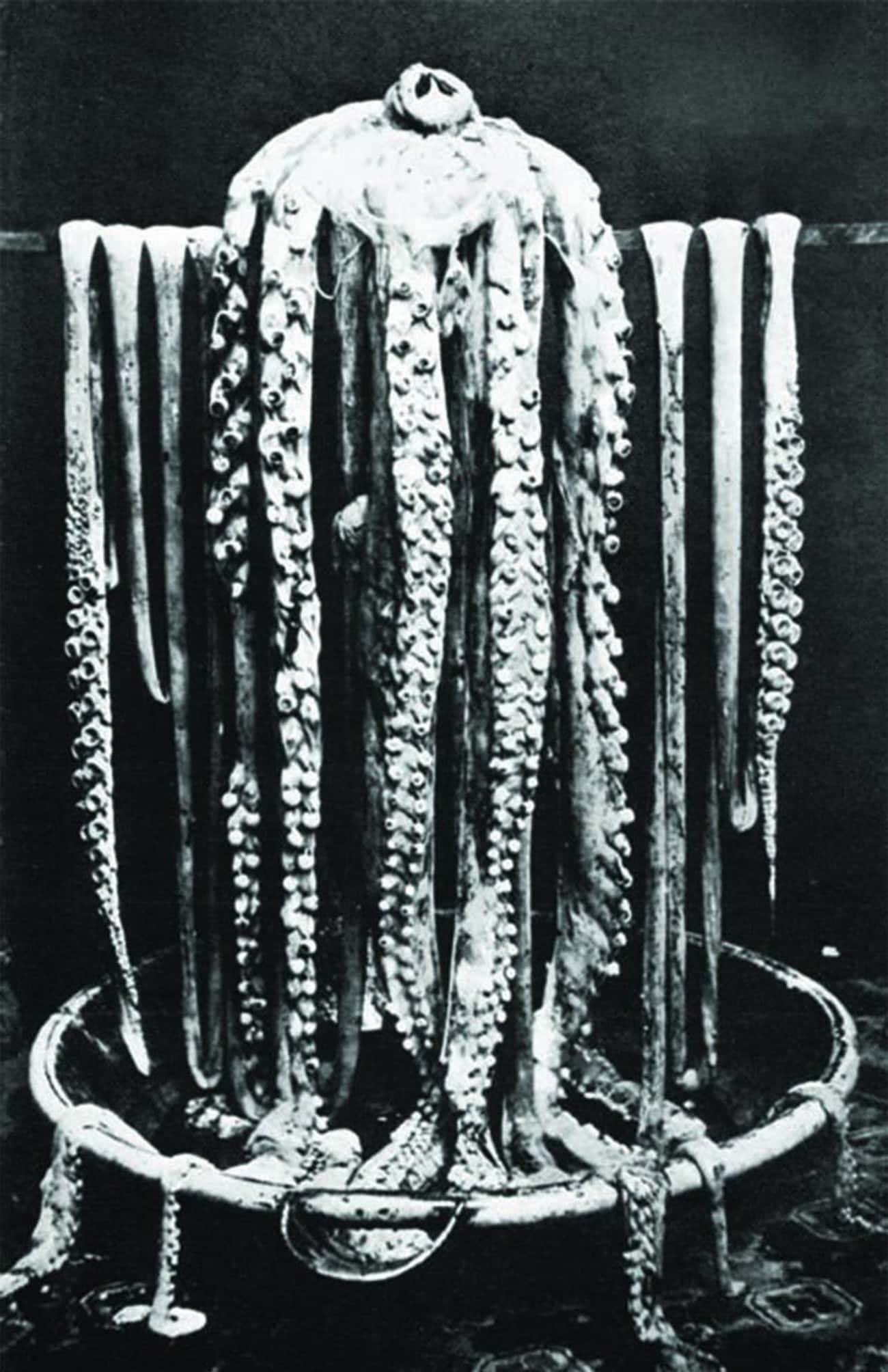
In 1873, an extraordinary moment unfolded with the capture of the first photograph ever taken of a giant squid. This groundbreaking feat was achieved by a team of scientists and sailors aboard the HMS Challenger during a pioneering oceanographic expedition. Employing innovative equipment and techniques, they succeeded in capturing an image of the elusive creature lurking in the depths of the ocean.
The historic photograph of the giant squid offered unprecedented insights into the biology and behavior of these enigmatic creatures, which had long remained shrouded in myth and mystery. By providing a tangible glimpse into the world of giant squids, the image marked a significant milestone in both marine science and photography, unlocking new avenues for the study and exploration of the ocean’s depths.
This remarkable achievement not only expanded our understanding of marine life but also fueled curiosity and fascination with the mysteries of the deep sea. The photograph of the giant squid stands as a testament to human ingenuity and the enduring spirit of exploration, inspiring future generations of scientists and adventurers to unravel the secrets hidden beneath the ocean’s surface.
The First Photograph Of A Presidential Dog, Abraham Lincoln’s Dog Fido; 1861
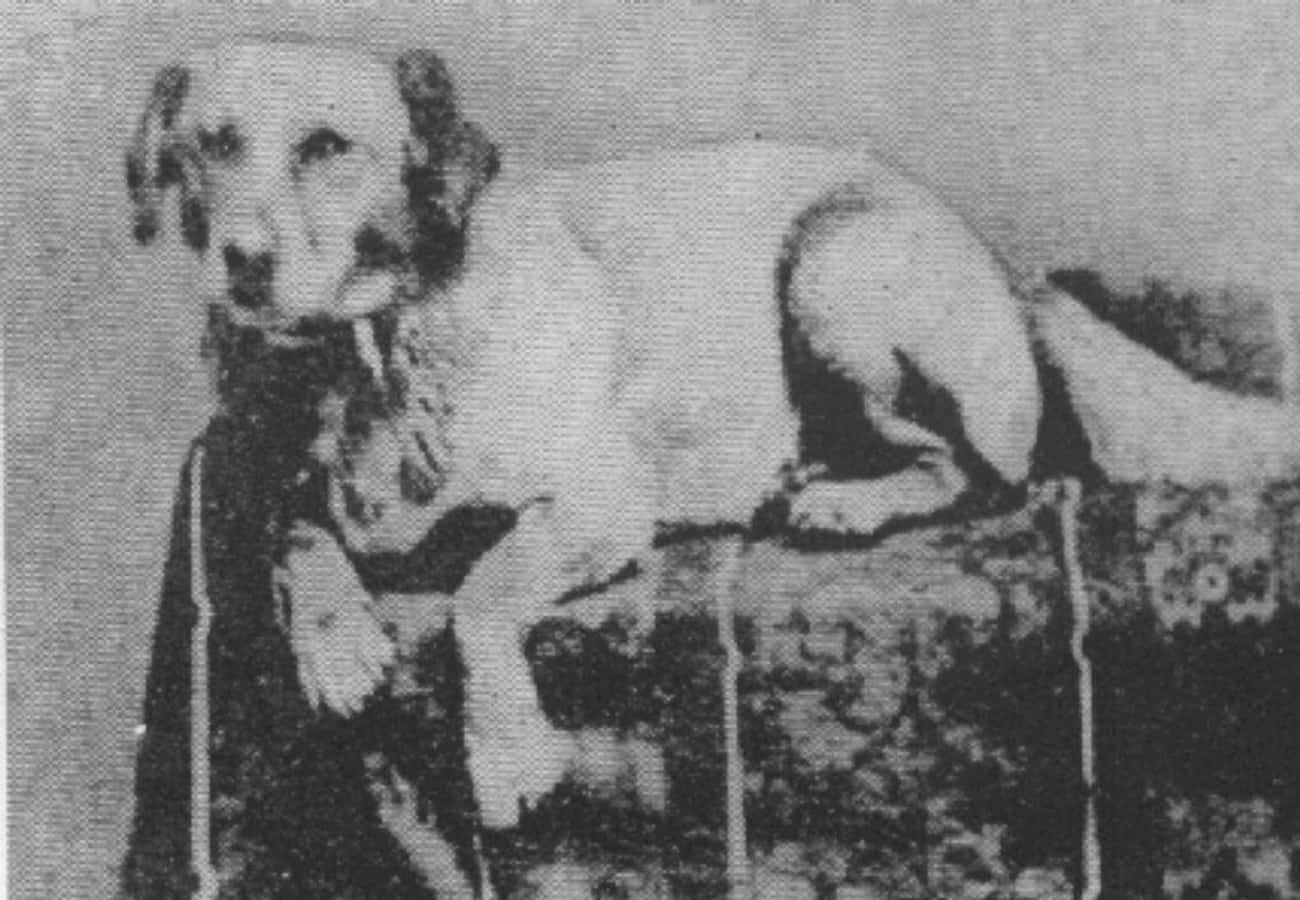
In 1861, a heartwarming moment unfolded in presidential history with the capture of the first photograph featuring a presidential dog, none other than Abraham Lincoln’s cherished pet, Fido. This iconic image immortalized the deep bond shared between Lincoln and his loyal canine companion, showcasing Fido’s unwavering devotion to the 16th President of the United States.
Taken during Lincoln’s tenure in the White House, the photograph offers a rare glimpse into the personal life of one of America’s most esteemed leaders, shedding light on the special role of pets within the presidential household. Fido, a mongrel dog renowned for his gentle demeanor and steadfast loyalty, endeared himself to the Lincoln family, embodying the warmth and companionship that animals bring to our lives.
Beyond its historical significance, the photograph of Fido stands as a poignant testament to the enduring bond between humans and their animal companions. In capturing this tender moment between Lincoln and his beloved pet, the image transcends political realms, resonating with audiences across generations and serving as a timeless reminder of the profound impact that animals have on our lives.
The First Photo Of A Recording Studio; 1898
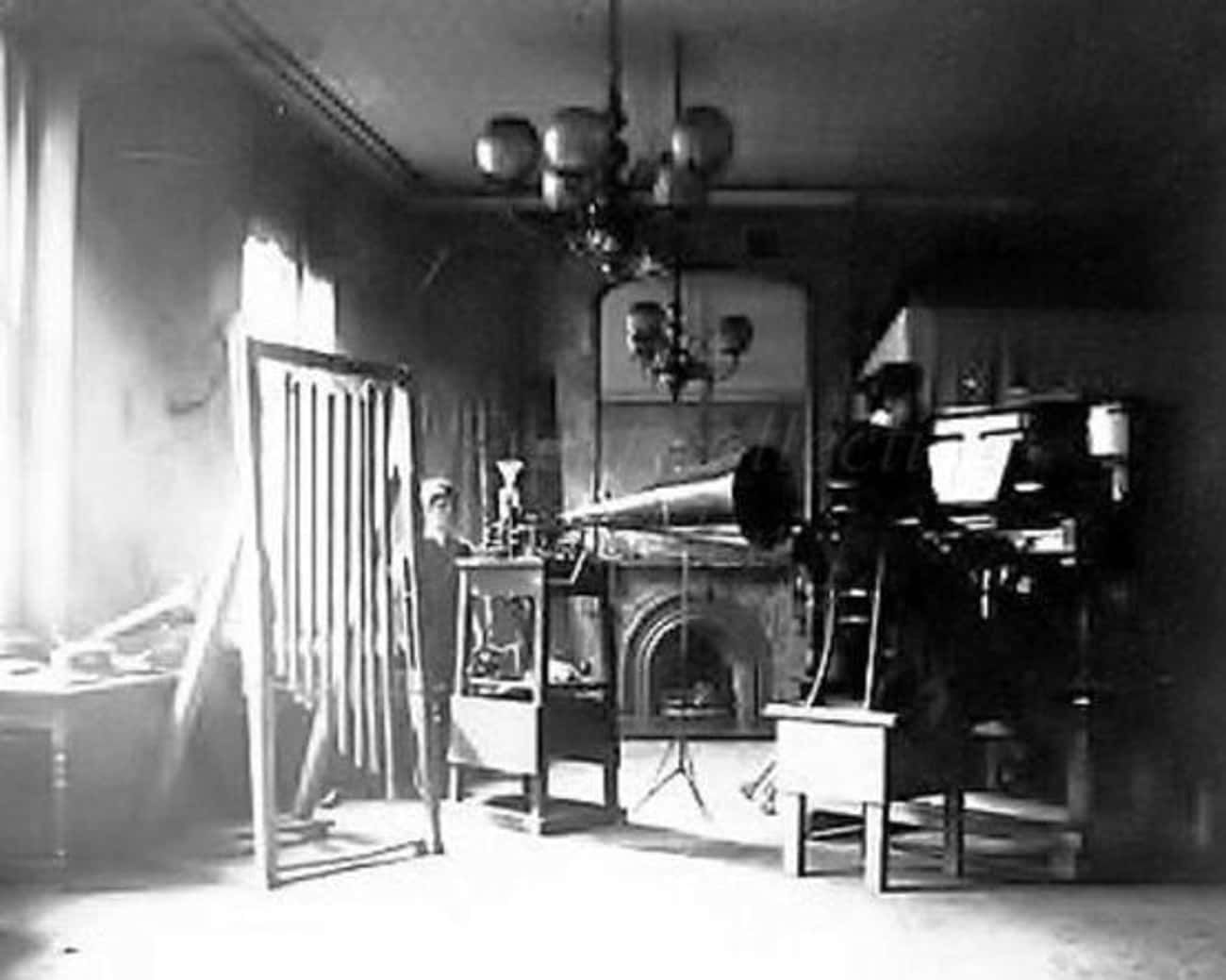
In 1898, a significant moment in the history of sound recording unfolded with the capture of the first-ever photograph of a recording studio. This remarkable snapshot offers a captivating glimpse into the nascent days of sound preservation, providing a window into the technology and atmosphere of a pivotal era in music history.
In the photograph, we are transported to a scene teeming with ingenuity and collaboration, where technicians and musicians alike converge to harness the power of cutting-edge machinery and equipment. Against the backdrop of this recording studio, we witness the birth of a new medium for capturing the musical performances of the time.
The image serves as a poignant reminder of the pioneering spirit that characterized the early days of the recording industry, where each innovation represented a bold leap into uncharted territory. As we reflect on this historic photograph, we are reminded of the profound evolution that has taken place in our ability to capture and share music, while also paying homage to the humble origins of an industry that continues to shape our cultural landscape to this day.
Margaret Gorman, The First Miss America; 1921
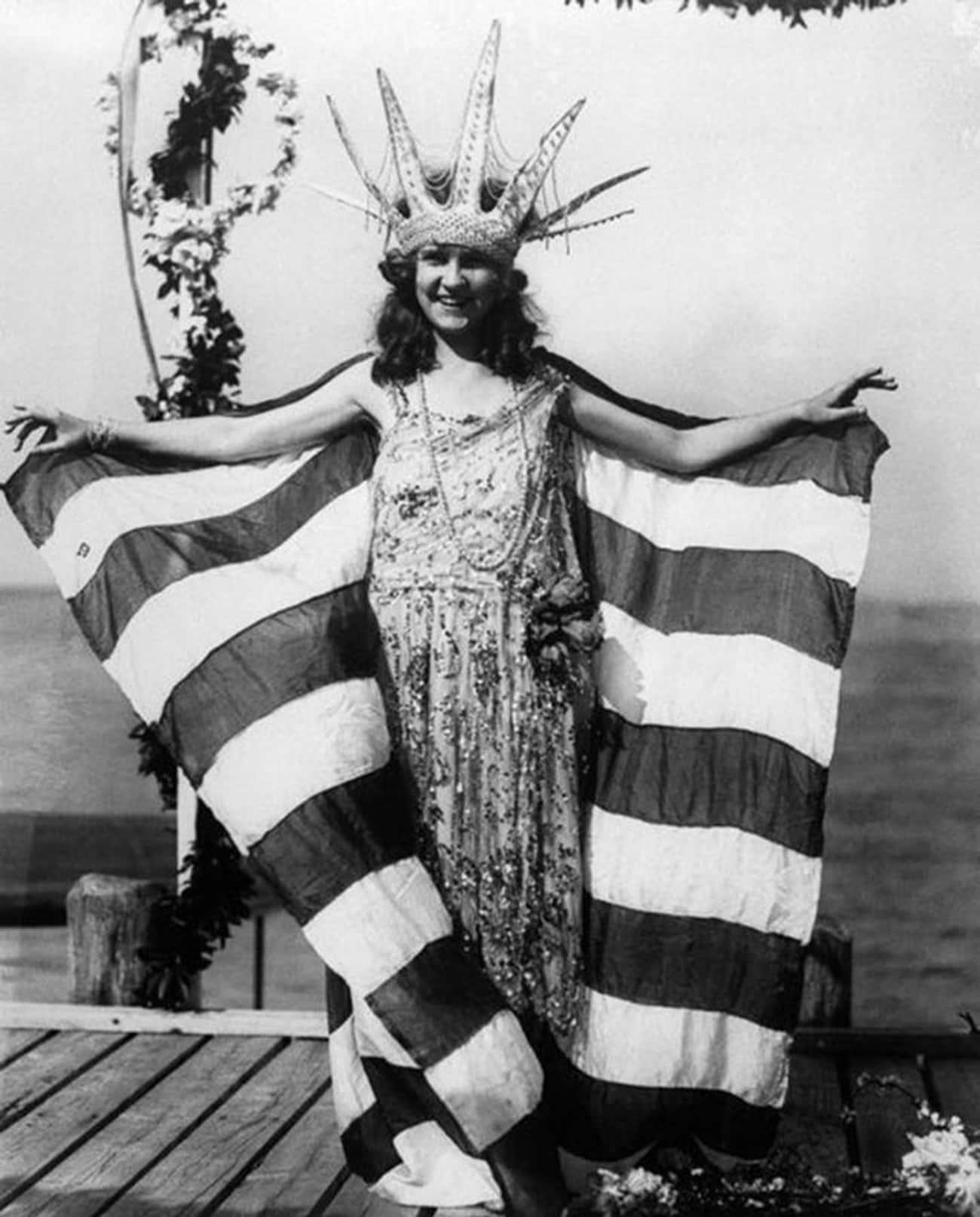
In 1921, Margaret Gorman etched her name into the annals of history as the very first Miss America, a title she claimed during the inaugural Miss America pageant held in Atlantic City, New Jersey. Affectionately known as “ret” to her friends, Margaret captivated judges and audiences alike with her undeniable charm, grace, and poise.
Her coronation not only marked a momentous occasion but also heralded the dawn of a cherished American tradition that celebrates beauty, talent, and intellect. As the pioneering Miss America, Margaret Gorman became an emblem of inspiration for countless women, encouraging them to embrace their aspirations and embrace their individuality.
Throughout the years, Margaret’s legacy has endured, serving as a beacon of empowerment and achievement within the realm of pageantry and beyond. Her historic victory laid the foundation for generations of women to follow, instilling in them the courage to pursue their dreams and leave an indelible mark on the world.
The Very First Foam Finger, 1971

In 1971, an exciting moment unfolded with the creation of the very first foam finger, igniting a trend that would soon sweep across sports games and events. This innovative foam hand quickly captured the hearts of fans, who embraced it as a beloved symbol of support for their favorite teams and performers.
With its lightweight and easy-to-use design, the foam finger offered fans a fun and expressive way to cheer on their teams and showcase their enthusiasm. Whether waving it proudly in the stands or brandishing it fervently from the sidelines, fans delighted in the spirited camaraderie it fostered among fellow supporters.
Since its inception, the foam finger has become an iconic fixture at stadiums and arenas worldwide, serving as a tangible embodiment of fan spirit and pride. Its enduring popularity underscores its enduring appeal as a cherished accessory for fans of all ages, symbolizing the unbridled passion and unwavering dedication that define the sports community.




